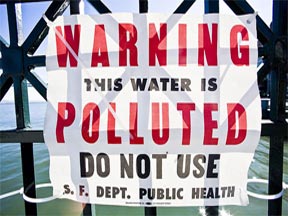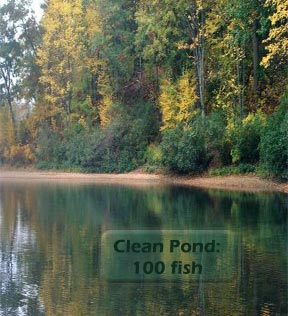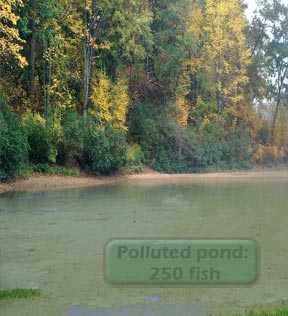 Pond Pollution Paradox
Pond Pollution Paradox
Let's start with the easiest method first. Say you want to determine whether pollution is bad for fish (this might seem obvious, but a lot of what environmental scientists do is try to prove the obvious so that the public will care and people who make policy will do something about it).
The easiest way to do this is to pick some polluted ponds and some non-polluted ponds and count the fish in each (using a varient of abundance sampling).
Notice I said ponds PLURAL -- why not just sample a single polluted pond and one clean one and be done with it? Well, let's try that...


Uh oh, what happened? Are there really more fish in polluted ponds?
A lot of things could have happened. Maybe there was a fishing tournament in the clean pond last week. Maybe Fish and Wildlife just stocked the polluted pond. Maybe aliens came down and kidnapped the population of the clean pond (ok, probably not). But the point is you just got unlucky and happened to pick two ponds that are not representative.
How do you protect yourself from bad luck? Once again, you use multiple samples -- in this case multiple ponds.
Let's see how that turns out. Below we add 4 more clean ponds, and 4 more polluted ponds:
5 clean ponds: 100, 400, 300, 450, 550 fish
5 polluted ponds: 250, 100, 50, 150, 0 fish
OK, now we're getting somewhere!
Copyright University of Maryland, 2007
You may link to this site for educational purposes.
Please do not copy without permission
requests/questions/feedback email: mathbench@umd.edu